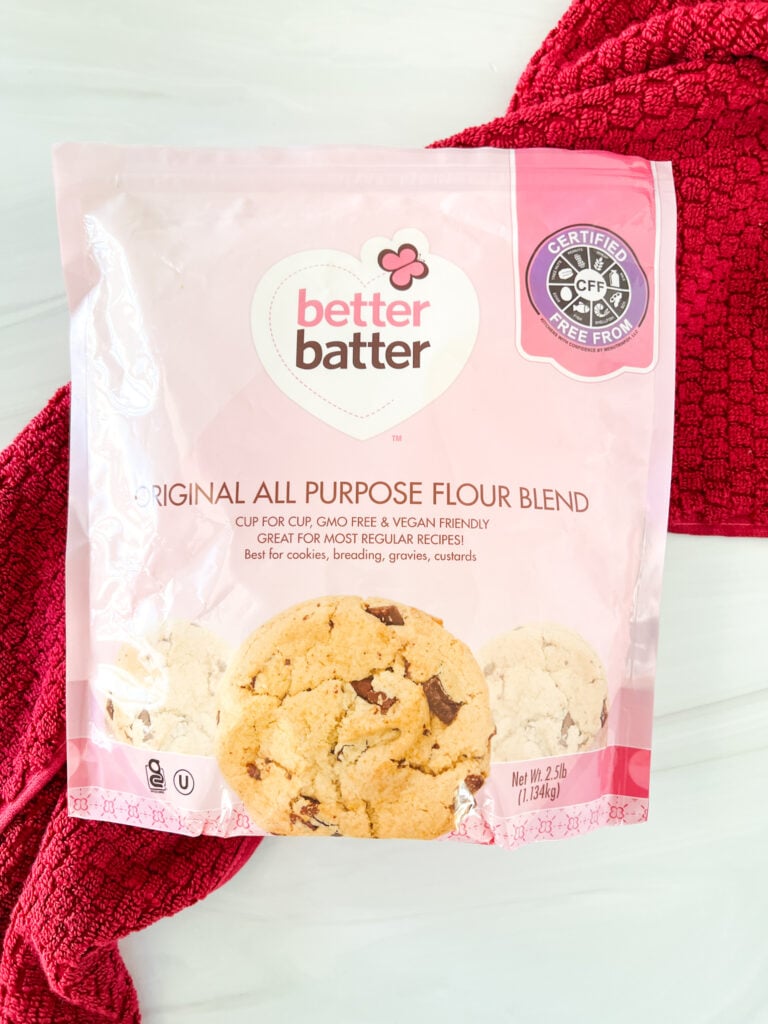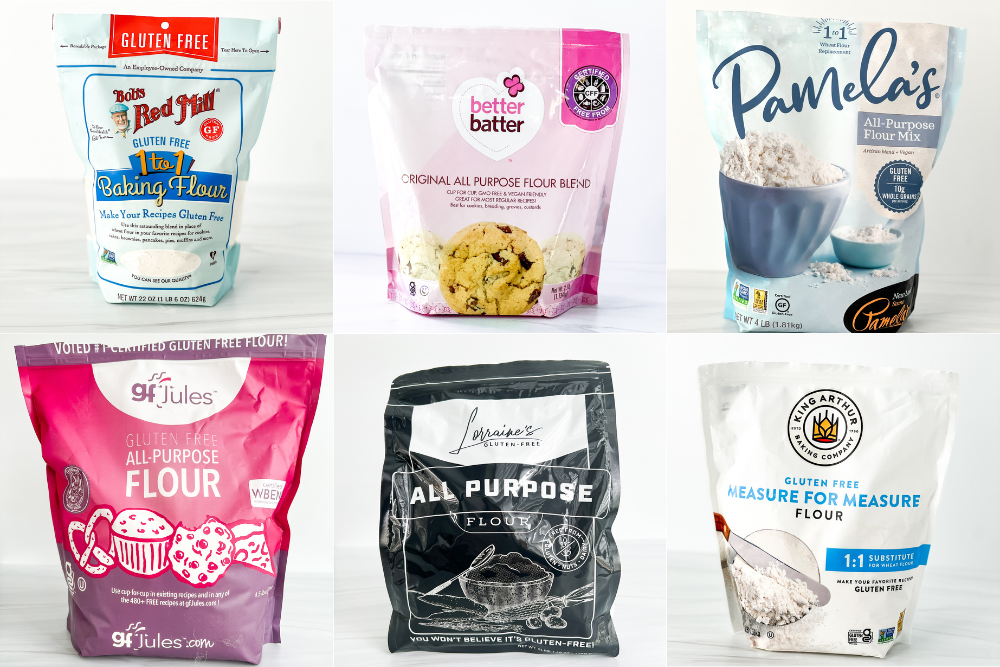
Baking with gluten-free flour is not for the faint of heart. You’ll need to make many considerations to ensure your baked goods have the right taste and texture. And not all gluten-free flours are the same. This post contains affiliate links. Please see my disclosures.
After following a gluten-free diet for nearly a decade, I like to consider myself a bit of a gluten-free flour expert… well, maybe a gluten-free baking flour junkie is more like it.
I’ve tried many gluten-free flour blends and find they react differently depending on your recipe.
Today, the gluten-free community is fortunate because the commercially available gluten-free flour mixes and blends are ready to use as a measure-for-measure substitute in any recipe that calls for wheat flour.
It wasn’t always that way, though.
You see, gluten is a critical ingredient in baking. It’s the “glue” that holds recipes together.
When gluten is mixed with water, flour becomes doughy and stretchy. Sadly, such elasticity is not found in gluten-free flour.
Gluten-free bakers wised up. They realized they could not bake a gluten-free cake that held together well and tasted good by using a single gluten-free flour, such as rice flour.
Instead, they found if you combined several types of flours, starches, and binders, each offering different textures and protein properties, they could find a combination that would closely mimic the taste and texture of gluten, a protein found in wheat, rye, and barley.
Instead of going through the hard work of coming up with a gluten-free baking flour blend of your own, all you have to do is go to the store and pick one to try.
Most grocery stores carry several gluten-free flour mixes and blends, allowing you to find your gluten-free baking groove.
While I think having options is a fantastic feat for the gluten-free community, it’s still essential to test various cup-for-cup gluten-free baking flour blends to find one you like most or the one that works best in any given recipe.
You may find that one brand works well for your grandmother’s cookie recipe while another blend works better for getting that flaky pie dough or homemade pasta. You’ll also need a totally different gluten-free flour mix when baking sweet breads made with yeast.
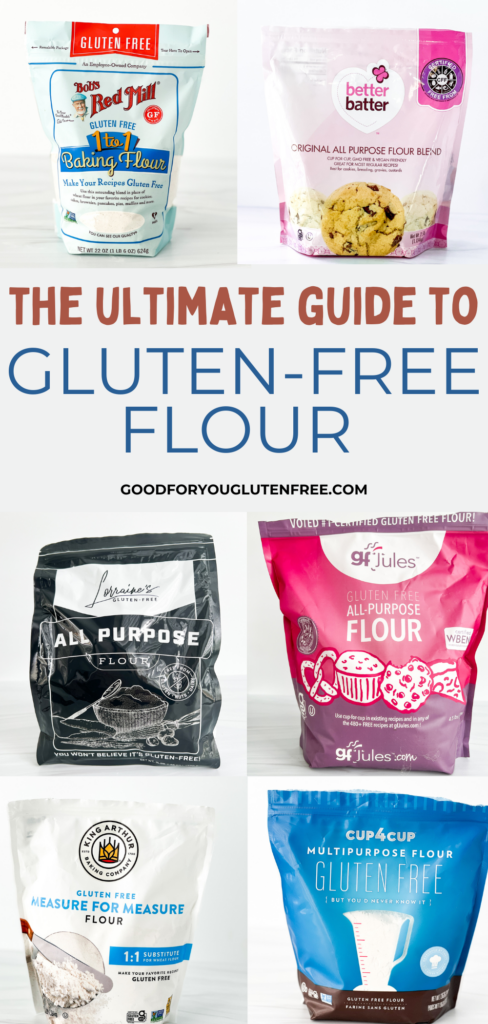
All-Purpose vs. Cup-for-Cup Gluten-Free Baking Flour
When assessing what gluten-free flour to use, it’s essential that you look at the ingredients. Some flour mixes don’t contain xanthan gum or guar gum. These gums are critical binding agents that hold your baked goods together. Without them, your cookies will crumble.
Some people don’t like xanthan gum because it’s a highly processed ingredient, or they prefer to add their own binder depending on the baked good they’re making, so some flour blends don’t contain xanthan gum.
If a flour blend doesn’t contain xanthan gum, Bob’s Red Mill offers up this nifty chart to help you understand how much of it to add depending on the baked good you’re making.
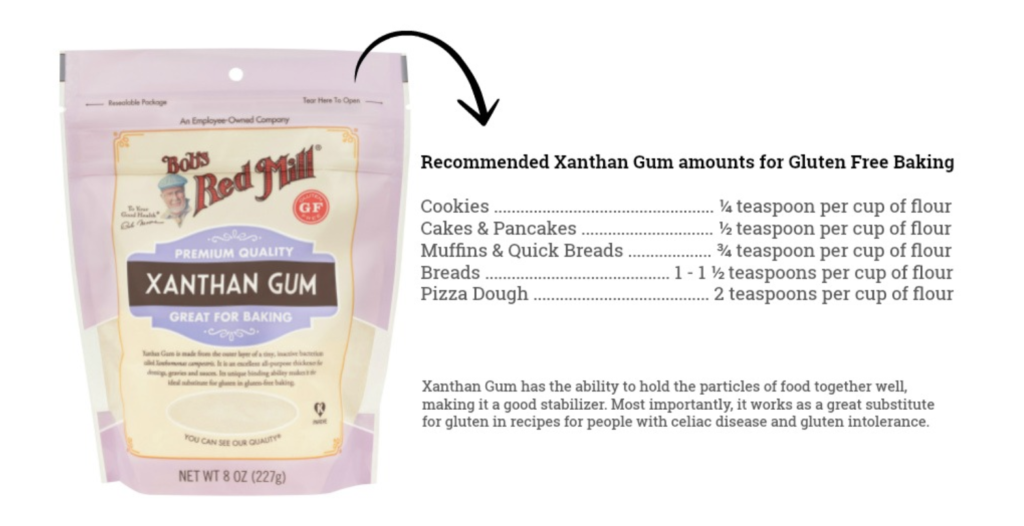
What’s Inside a Gluten-Free Baking Flour Blend?
When you buy a cup-for-cup flour blend, you’ll notice a combination of a few types of ingredients:
- You’ll see at least two different types of flour, including a mix of white rice flour, brown rice flour, quinoa flour, oat flour, corn flour, sorghum flour, etc.
- You’ll typically see a mix of starch(es), including but not limited to corn, arrowroot, potato, and tapioca starch.
- You’ll also see xanthan gum or guar gum, which, as mentioned previously, are binding agents that hold your gluten-free baked goods together when gluten is not present. Some mixes may include psyllium husk, another binding agent that is high in fiber (a key ingredient in laxatives).
I believe that choosing a cup-for-cup gluten-free flour baking blend is in the tastebuds of the beholder. You may like the taste and texture of something that another person does not like. That’s why trying different flour blends in your favorite recipes is important to see what happens.
Baking Gluten-Free Recipes with Yeast
Bob’s Red Mill discusses the differences between its all-purpose gluten-free flour blend and its 1:1 gluten-free flour blend, and one of the takeaways from the article is that different flours work differently in yeast vs. non-yeast recipes.
Bob’s Red Mill says that its All Purpose Flour works well in yeast recipes because it contains a higher protein and fiber content. An article posted on the Bob’s Red Mill website says that a higher protein content will add better structure for the carbon dioxide bubbles released from the yeast.
On the other hand, the company says its 1-to-1 gluten-free flour works well with recipes that use baking powder and/or baking soda as the leavening agent, and it already contains xanthan gum to improve the structure of baked goods.
I personally find that Bob’s Red Mill – and other gluten-free flour blends – disappoint when it comes to baking sweet bread recipes that contain yeast, such as cinnamon rolls, babka, yeast donuts, and monkey bread.
That’s why, instead of using an all-purpose or 1-to-1 flour blend to make sweet bread recipes, I highly recommend using Hand + Heart Gluten-Free Sweet Dough Mix (formerly Lorraine’s) when making desserts with yeast.
This blend is specially formulated to make those doughy yeast recipes you crave, without gluten, of course.
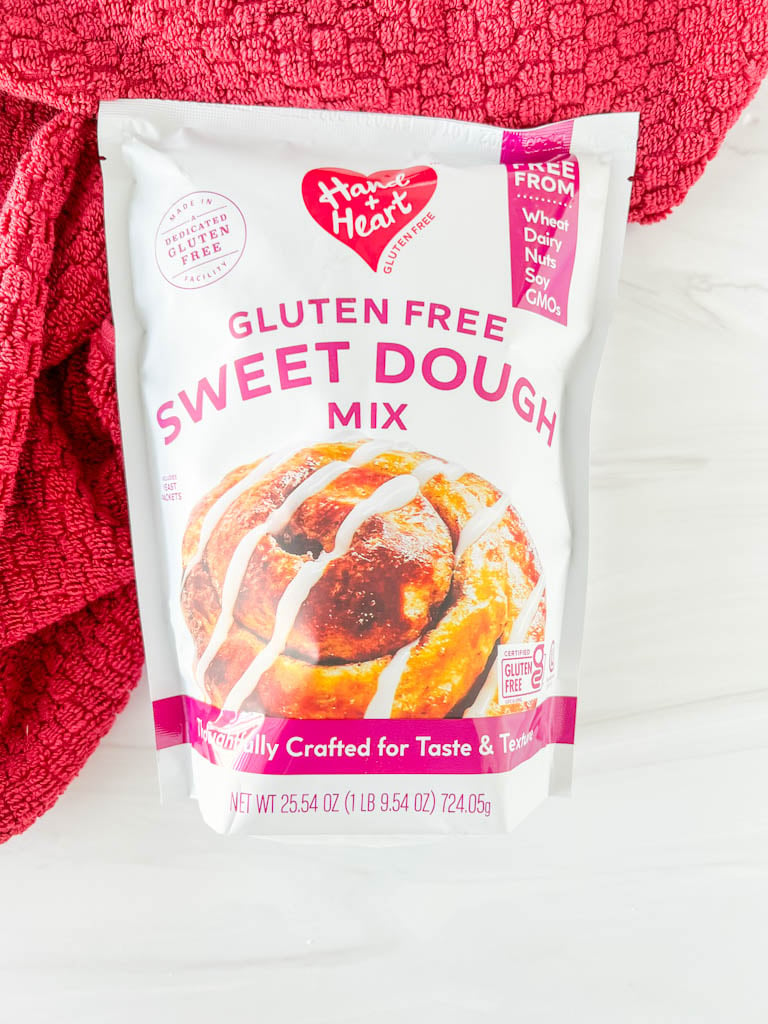
My FAvorite Gluten-Free Baking Flour Blends
I have a vision to one day test the same recipe with several different blends so I can truly understand how each blend works when put to the test. As you can imagine, this would be a big undertaking, so I need to table the idea for now.
UPDATE: I made the same chocolate chip cookie recipe with five different gluten-free flours. As you can see in the below picture, I got five very different results.
Check out my post, Which Gluten-Free Flour is Best for Making Chocolate Chip Cookies? I Tested 5 Flours With 1 Recipe to Find Out.
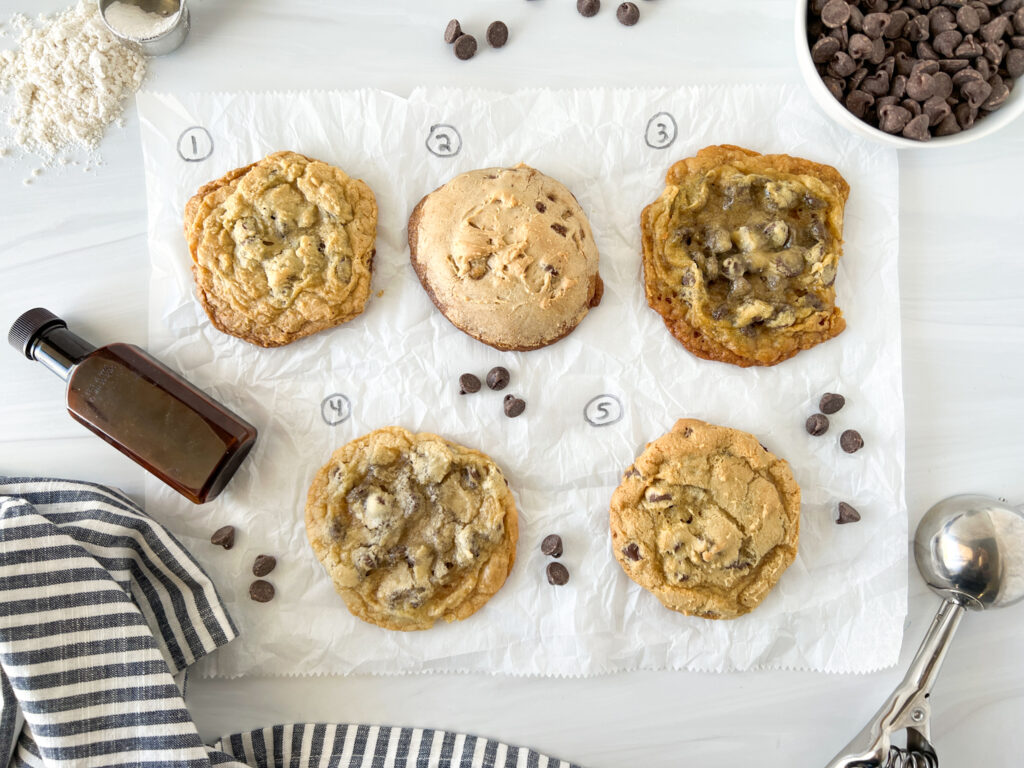
One day I’ll test other recipes with each flour blend, but for now, I want to share my favorite 1-to-1 gluten-free flour brands with you.
(1) Bob’s Red Mill Gluten Free 1-to-1 Flour – FAVORITE
Bob’s Red Mill offers a 1-to-1 gluten-free flour blend that I love – and it’s my go-to gluten-free flour mix. It’s also dairy-free and corn-free – big pluses in my book! It’s widely available and well priced. That’s why it’s #1 in my book.
This flour blend works fantastic in pretty much any recipe I make. It’s perfect in my famous Chocolate Chip Applesauce Cake, and it even worked well in these awesome Raspberry Thumbprint Cookies.
You can purchase Bob’s Red Mill Gluten Free 1-to-1 Flour on Amazon and in many grocery stores nationwide.
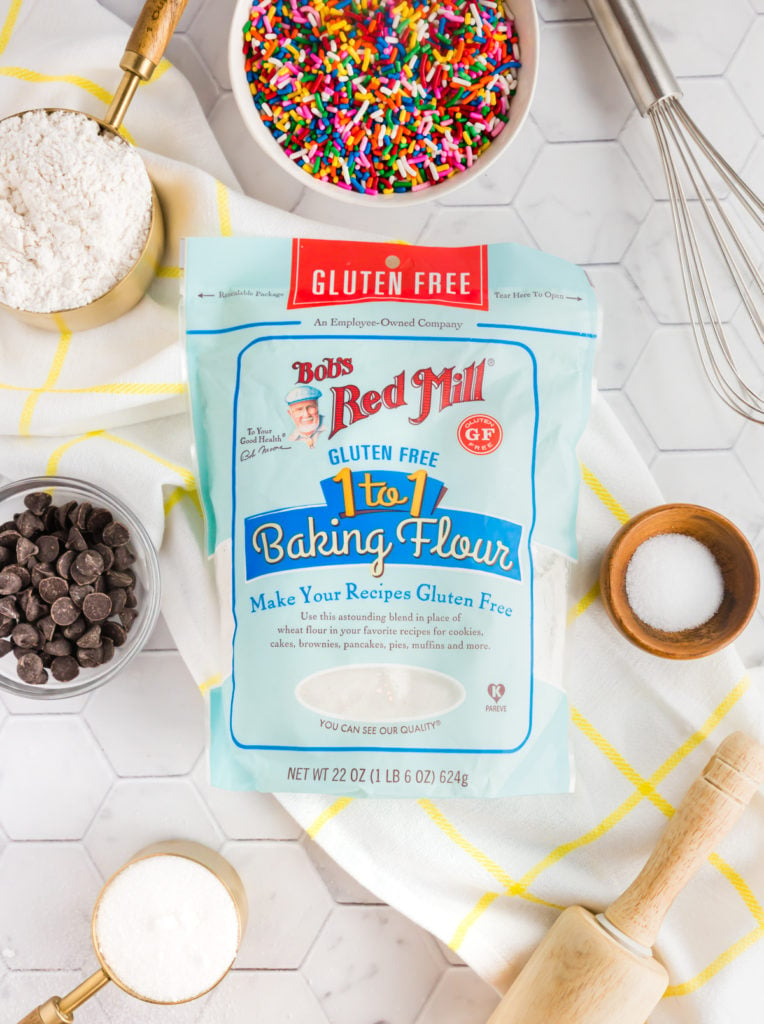
(2) Better Batter All-Purpose Gluten-Free Flour – FAVORITE
Better Batter is a superior gluten-free flour that works well in many recipes. I particularly love using it for cookie recipes. It’s truly my #1 flour blend, but it’s not as widely available and a bit more expensive, so I don’t use it as often.
You can purchase Better Batter online only, and if you use my code, GOODFORYOUGF, you’ll get 30% off. Sweet!
Other Gluten-Free Flours
Below are some other gluten-free baking flour blends you may want to try, listed in alphabetical order.
If you’ve tried any of these blends, please leave a comment to share which ones work best for you and what recipe you made. This an excellent opportunity for us to share what we know!
(3) Cup 4 Cup Multi-Purpose Gluten-Free Flour
Cup 4 Cup is a fantastic flour developed by French Landry Chef Thomas Keller. It works beautifully in quick breads and pancakes. It contains milk, so I don’t use it as often since so many of my friends are dairy-free.
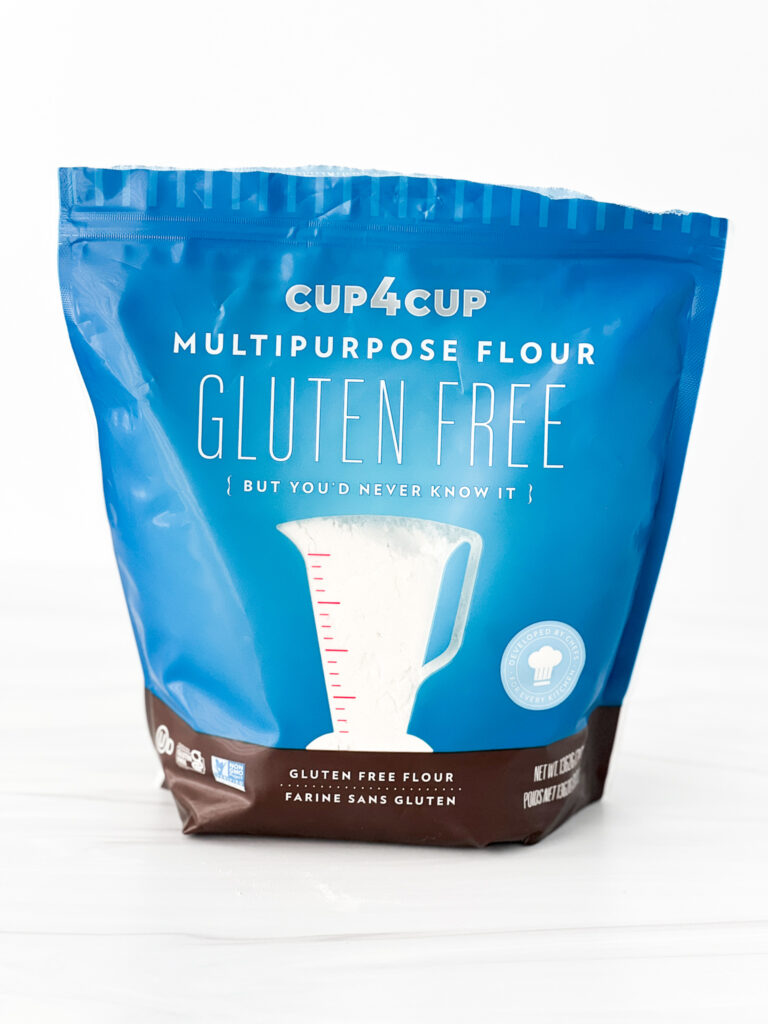
(4) GF Jules Gluten-Free All-Purpose Flour
GF Jules Gluten-Free Flour was developed by influencer Jules Shepard, an advocate for the gluten-free community for decades. GF Jules is a small brand run by Jules, and is very popular in gluten-free land.
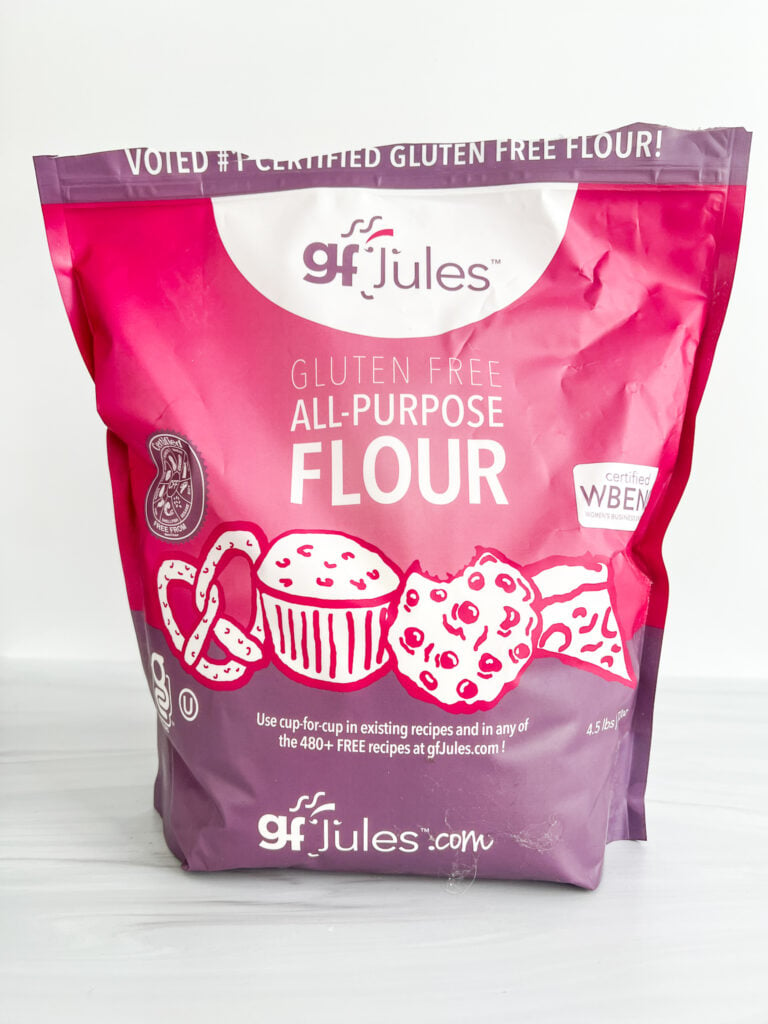
(5) King Arthur Measure for Measure Flour
King Arthur’s Measure-for-Measure Gluten-Free Flour is found in most major grocery stores and Target. It’s popular and priced well. It works well as a wheat flour replacement in most recipes.
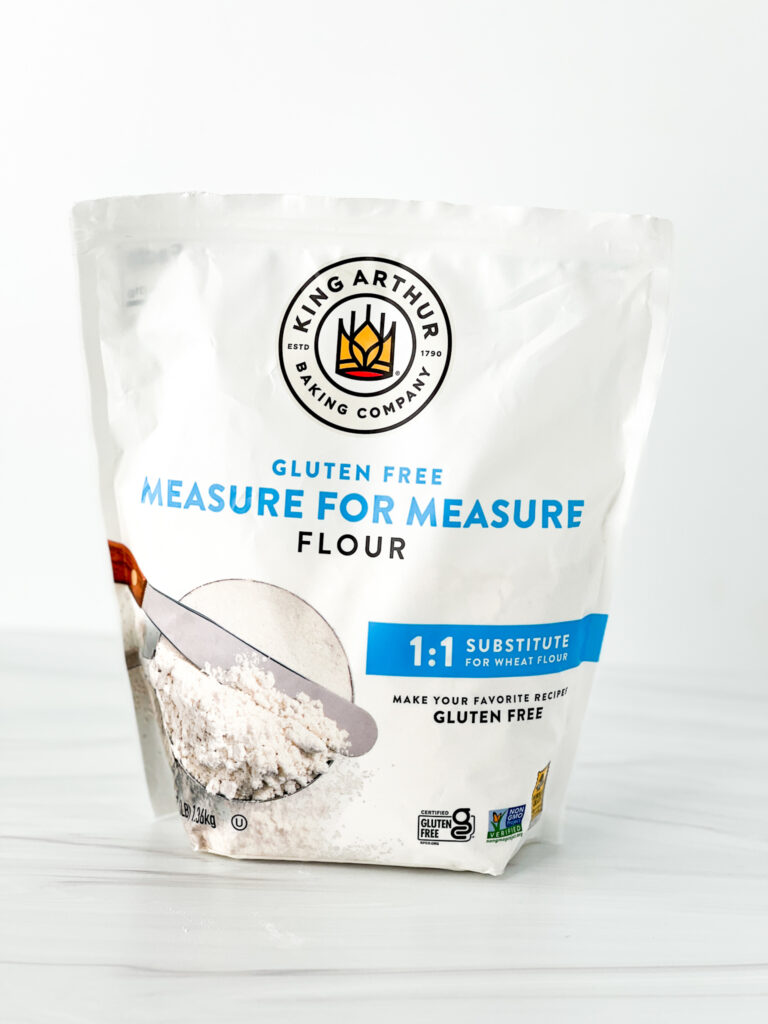
(6) Hand + Heart Gluten-Free All Purpose Flour
Hand + Heart Gluten-Free All-Purpose Flour (formerly known as Lorraine’s Gluten-Free) was founded by Lorraine Fagela, a baker in Maine, who has made her mixes available to everyone via her website. I’m a bit obsessed with Hand + Heart flour, especially the Sweet Dough Mix (not pictured).
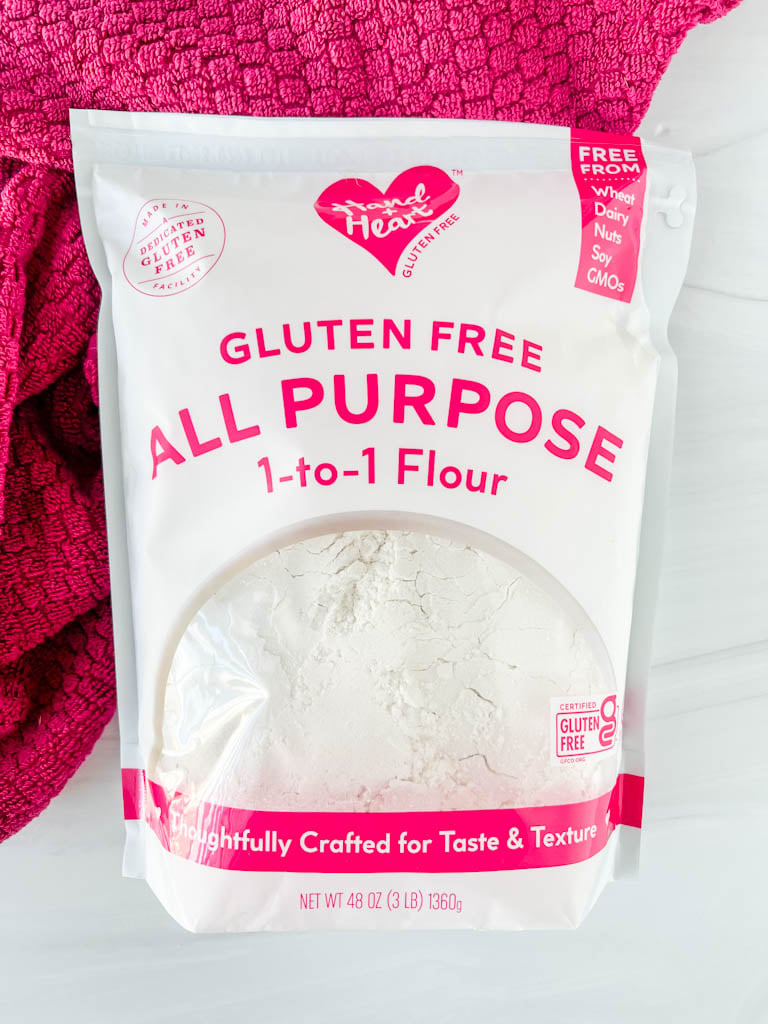
(7) Namaste Perfect Flour Blend
Namaste Gluten-Free Perfect Flour Blend is a family-owned brand that has decent distribution throughout the U.S. and has even been spotted at some Costco stores nationwide.

(8) Pamela’s All-Purpose Flour Mix
Pamela’s Gluten-Free All-Purpose Flour Blend was founded in 1988 by a woman on a mission to make gluten-free foods during a time when there were none. The company was acquired by Ancient Harvest in 2020, and Pamela is no longer involved in the business… but her flour blend lives on.
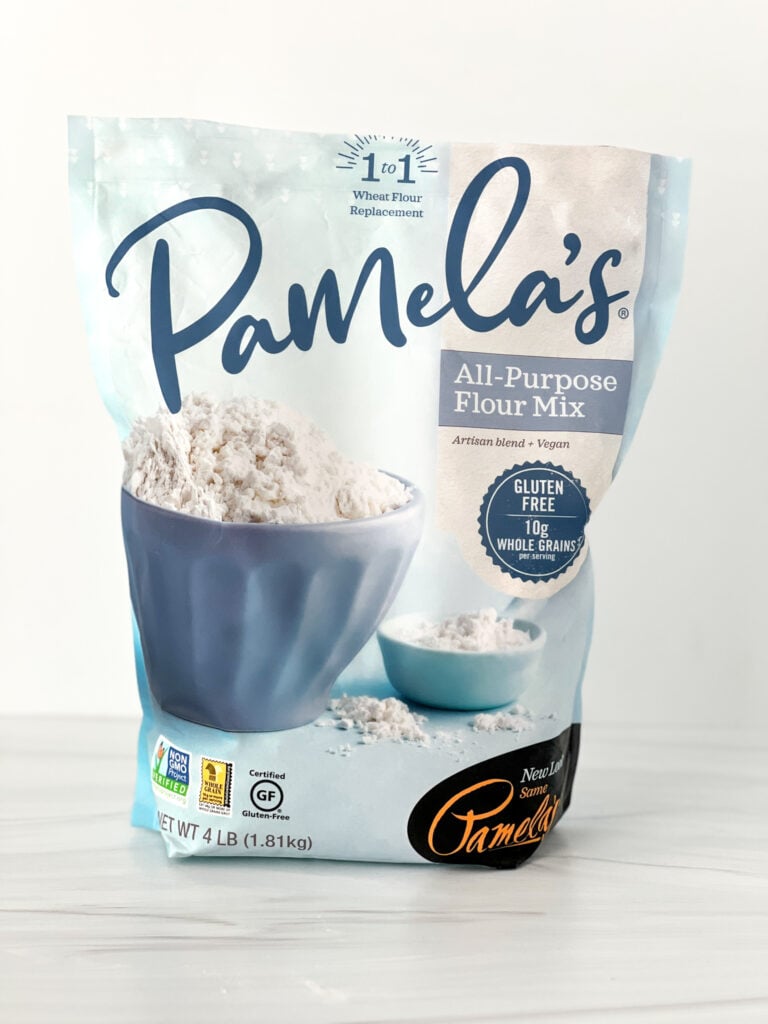
How to Make a Gluten-Free Flour Blend
I don’t blend my own baking flour blend unless I’m following a recipe that says I need to (such as when I make my gluten-free challah recipe). I am completely satisfied with the commercially available blends.
However, if you’re looking to create your own flour blend, I want to share more about each gluten-free flour, so you become familiar with the huge variety of flours, starches, and ingredients often found in gluten-free (and even paleo) baking.
Remember, you’ll want to combine a variety of flours, at least one starch, and of course, don’t forget the binding agents (gums) when creating your own gluten-free baking flour blend.
The Heritage Cook offers great information about building your gluten-free flour blend. I highly recommend reading her article if you’re serious about making your own gluten-free flour blend.
Gluten-Free Flours 101
Almond flour is made from ground almonds. Blanched almond flour, which is most commonly used, means the outer skin of the almonds was removed before the almonds were milled. Almond flour is high in protein, fiber, and fat and adds extreme moisture to baked goods. It’s sweet and nutty too. Learn more about working with almond flour.
Amaranth is an ancient grain that can be turned into flour. It’s high in protein, minerals, and vitamins and has a mild, nutty flavor.
Arrowroot is similar to cornstarch (and can be used instead of cornstarch). It is often used in gluten-free baking and also can be used in a roux as a sauce thickener.
Bean flours have a strong, nutty flavor and works best in savory baked goods.
Brown rice flour is one of the most commonly used flours in gluten-free baking. It is milled from unpolished brown rice. It should be refrigerated and kept in a cool place to keep it fresh.
Buckwheat flour is treated as a grain, but it is not a cereal or grass; rather, it’s classified as a fruit. It’s high in fiber and protein and has a strong flavor.
Cassava flour is a white powdery flour made from peeled, dried, and ground yucca root (tapioca flour is just the starch of the yucca root, while cassava flour is the entire root). It can be used in equal weight measurement to wheat flour, making it one of the best grain-free and Paleo flour options.
Chickpea flour is used a lot in Middle Eastern and Indian cuisine and is made from protein- and fiber-rich garbanzo beans. It has a strong taste and works well in baking gluten-free breads.
Coconut flour is made from dried coconut meat and has a distinct sweet coconut flavor. It is low in carbohydrates and high in fiber, healthy fats, and protein, making it a popular choice for those on a grain-free, Paleolithic diet. Coconut flour is highly absorbent; only a little flour is needed to produce a recipe, as the flour absorbs the liquid in your recipes.
Corn flour is made from finely ground corwithto a very fine, flour-like texture. It can be used in making baked goods.
Cornmeal is made from coarsely ground corn and is coarser in texture and yellow in color. Corn muffins and polenta are typically made with cornmeal vs. corn flour.
Cornstarch is the refined starch derived from corn and is used to thicken sauces and add silkiness to a baked good.
Guar gum is a thickening agent that adds structure or “glue” to gluten-free baked goods. Without guar gum (or xanthan gum), gluten-free baked goods would crumble.
Flaxseed meal has a mild, nutty flavor and contains plenty of omega-3 fatty acids. it has a nutritional boost to flour and can also be used as a substitute for eggs in baked goods. Only a little (1-3 tablespoons) of flaxseed meal is needed in recipes.
Millet flour has a mild, sweet, and nutty flavor and is made from the ancient millet grain and adds a cake-like crumble to baked goods.
Oat flour is made from oats that are pulsed into a flour-like texture. Remember, while oats are naturally gluten-free, they are notoriously cross-contaminated with wheat crops. Therefore, you should only use clearly labeled gluten-free oat flour or make your own from gluten-free oats. Oats have an earthy flavor and add moisture and structure to gluten-free baked goods. (Read, Are Oats Gluten-Free?)
Psyllium husk powder is a form of fiber made from the husks of the Plantago ovat plant’s seeds. It is a laxative and is the primary ingredient in Metamucil®. Psyllium husk has gained popularity in gluten-free baking as a binding agent. It has a high viscosity, which allows it to bind to water more effectively than xanthan gum to give baked goods structure.
Potato starch is a fine white flour derived from the flavorless starch from white potatoes and has a similar texture as cornstarch and tapioca starch.
Potato flour is made from whole peeled potatoes that are cooked, dried, and ground into a powder. It can be used in place of xanthan or guar gum in some recipes.
Quinoa flour is made from the ancient quinoa grain (technically, quinoa is a seed). Quinoa is the only non-animal product that is a complete protein (this means it contains all nine essential amino acids). Quinoa flour has a delicate, nutty (and sometimes bitter) flavor.
Rice flour is made from finely milled rice. Rice flour is used in baking and typically works well when blended with starches. Rice flour doesn’t have a strong flavor or color, making it ideal for baking, but it requires blending with other flours and starches to work.
Sorghum flour, also known as jowar, milo or cholam flour, is made from ground sorghum grains. It is high in fiber and protein. Sorghum flour has a mild, sweet flavor, making it ideal for use in gluten-free baking.
Sweet rice flour, or mochi flour, is made from glutinous rice flour. The word “glutinous” describes the stickiness of the rice when cooked, and it does not contain gluten despite what the name suggests. Glutinous rice flour is often used as a thickening agent in sauces, crusts, and breads.
Tapioca flour or tapioca starch are used interchangeably to describe the starch derived from the yucca root. It can be used as a thickening agent and has similar properties to potato starch and cornstarch.
Teff flour is an ancient gluten-free grain that looks like a poppy seed. It has a mild, nutty flavor and is high in calcium, protein, and fiber.
Tigernut flour is gaining in popularity, and, unlike its name suggests, it’s not a nut at all. A tiger nut is a root vegetable, making it naturally gluten-free and grain-free. Tigernut flour is slightly nutty and sweet in flavor, so recipes calling for tigernut flour may require less sugar.
Xanthan gum is a thickening agent that adds structure or “glue” to gluten-free baked goods. Gluten-free baked goods would crumble without xanthan gum (or guar gum).
Are You Up to the Challenge?
Baking gluten-free is tough – I won’t lie. Without the gluten (or glue), recipes can fall apart, fall flat, or taste gritty.
I highly recommend new gluten-free bakers take advantage of the wonderful world of commercially available gluten-free baking flour blends. These flours will allow you to make your old recipes without wheat flour, and they won’t taste half bad either!
And if you want to become more adventurous, you can make your own gluten-free flour blend. As for me, I’m happy to buy one at the store. One and done!
